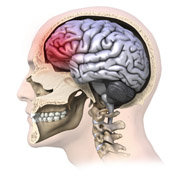Research and Innovation, UNL Office of

Center for Brain, Biology, and Behavior: Faculty Publications
Document Type
Article
Date of this Version
2022
Citation
Published in Annals of Biomedical Engineering (2022)
doi:10.1007/s10439-022-02974-5
Abstract
The relationship between head impact and subsequent brain injury for American football players is not well defined, especially for youth. The objective of this study is to quantify and assess Head Impact Exposure (HIE) metrics among youth and collegiate football players. This multiseason study enrolled 639 unique athletes (354 collegiate; 285 youth, ages 9–14), recording 476,209 head impacts (367,337 collegiate; 108,872 youth) over 971 sessions (480 collegiate; 491 youth). Youth players experienced 43 and 65% fewer impacts per competition and practice, respectively, and lower impact magnitudes compared to collegiate players (95th percentile peak linear acceleration (PLA, g) competition: 45.6 vs 61.9; 95th percentile PLA practice: 42.6 vs 58.8; 95th percentile peak rotational acceleration (PRA, rad∙s–2) competition: 2262 vs 4422; 95th percentile PRA practice: 2081 vs 4052; 95th percentile HITsp competition: 25.4 vs 32.8; 95th percentile HITsp practice: 23.9 vs 30.2). Impacts during competition were more frequent and of greater magnitude than during practice at both levels. Quantified comparisons of head impact frequency and magnitude between youth and collegiate athletes reveal HIE differences as a function of age, and expanded insight better informs the development of age-appropriate guidelines for helmet design, prevention measures, standardized testing, brain injury diagnosis, and recovery management.
Included in
Behavior and Behavior Mechanisms Commons, Nervous System Commons, Other Analytical, Diagnostic and Therapeutic Techniques and Equipment Commons, Other Neuroscience and Neurobiology Commons, Other Psychiatry and Psychology Commons, Rehabilitation and Therapy Commons, Sports Sciences Commons


Comments
Copyright © 2022 by the authors, under exclusive license to Biomedical Engineering Society. Published by Springer. Used by permission.